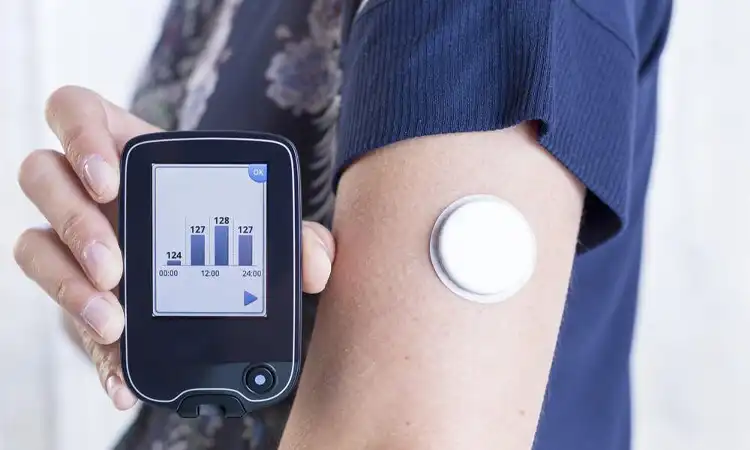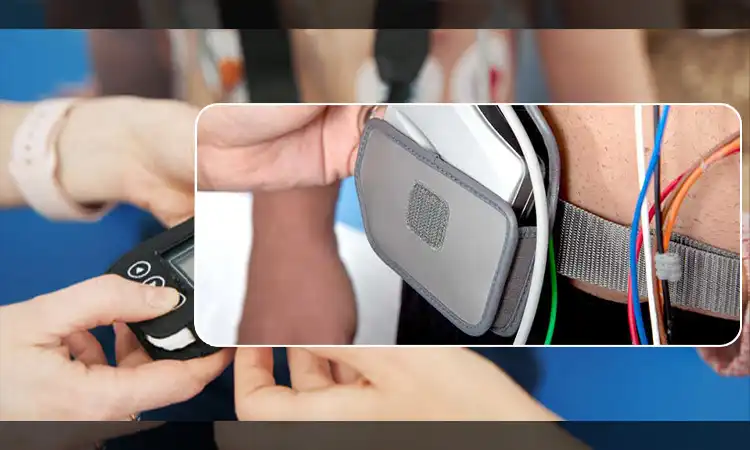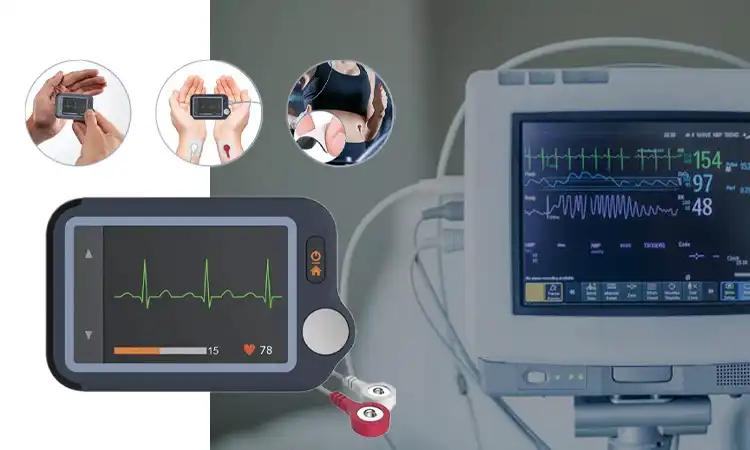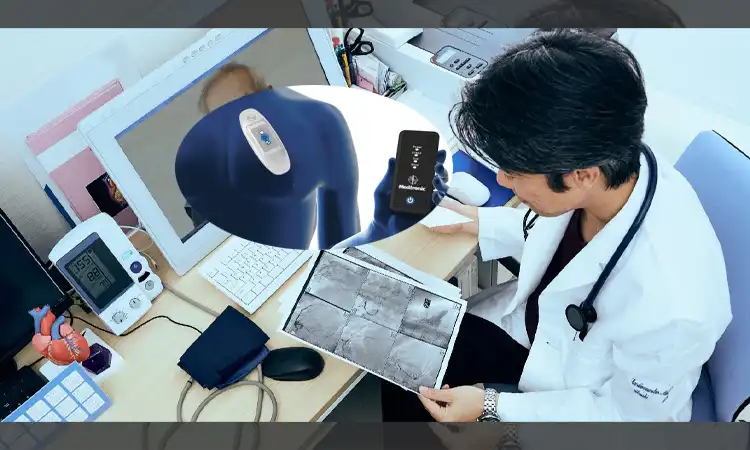Mobile Cardiac Telemetry (MCT) is a device that continuously monitors and records the heart’s electrical activity. It is one of the latest and most advanced technologies in the field of heart monitoring. With MCT, patients can have their heart activity monitored remotely without the need to be physically present in a hospital or doctor’s office. Here, we will explore how MCT works, how it differs from other heart monitoring devices and the companies that offer MCT services.
What is a Mobile Cardiac Telemetry?
Mobile ECG telemetry, also known as Mobile Cardiac Telemetry (MCT), is a device that continuously monitors and records the heart’s electrical activity. It is a non-invasive method of monitoring the heart’s activity, allowing for remote monitoring of patients in real time. MCT is typically used to detect abnormal heart rhythms or to diagnose heart conditions. It provides patients with an effective way to track their heart activity without being physically present in a hospital or doctor’s office.
How Mobile Cardiac Telemetry Works
Mobile Cardiac Telemetry works by using a small device that is attached to the patient’s chest. This device continuously records the heart’s electrical activity and sends the data to a monitoring center for analysis. The device is designed to detect any abnormal heart rhythms or other irregularities in the heart’s electrical activity. If an abnormal rhythm is detected, the monitoring center will immediately alert the patient’s healthcare provider, who can take appropriate action. MCT provides a non-invasive way to track the heart’s activity, allowing patients to go about their daily activities while their heart activity is continuously monitored.
Mobile Cardiac Telemetry Devices Types
Mobile ECG telemetry, or Mobile Cardiac Telemetry (MCT), comes in various types and designs. In general, MCT devices are small, wearable devices that continuously record the heart’s electrical activity and send that data to a monitoring center for analysis. There are several different types of MCT devices available, including:
- Patch Devices: These are small, adhesive patches that are placed on the skin of the patient’s chest. They are equipped with sensors that continuously record the heart’s electrical activity and send the data to a monitoring center. These patches are typically worn for a set period of time, ranging from a few days to a few weeks.
- Strap Devices: These wearable devices are worn around the patient’s chest. They typically have a strap or harness that secures the device in place, and they may have additional sensors that track other vital signs, such as respiration rate or blood pressure.
- Portable Monitors: These are small, portable devices that can be carried in a pocket or purse. They are typically used for short-term monitoring and can quickly check the heart’s activity in response to certain activities or situations.
- Implantable Devices: These are small devices surgically implanted under the skin, typically in the chest area. They are designed for long-term monitoring and can be used to detect and track heart conditions such as arrhythmias or heart failure.
- Smartwatches and Other Wearables: Many smartwatches and other wearables now come equipped with ECG sensors that can monitor the heart’s activity. These devices are typically worn on the wrist and can continuously monitor the heart’s activity throughout the day.
MCT devices vary in terms of the level of monitoring they provide, the length of time they can be worn, and the data they collect. Some devices are equipped with additional sensors to monitor other vital signs, such as respiration rate or blood pressure. Others are designed for long-term monitoring, while others are still used for short-term monitoring in response to certain activities or situations. Overall, the type of MCT device best for a given patient will depend on their specific needs and the nature of their heart condition.
Of course, most of the equipment is required to be certified in order to be licensed. You can learn more about telemetry certification in this article: What Does Telemetry Certification Mean?
What are the Two Types of Cardiac Monitoring?
Holter and event monitoring are two types of cardiac monitoring often used to diagnose and monitor heart conditions. Although they are similar in some ways, there are also some key differences between the two.
Holter Monitoring
Holter monitoring is a type of ambulatory electrocardiography (ECG) that involves wearing a small, portable device that continuously records the electrical activity of the heart for a set period of time, usually 24 to 48 hours. The device, called a Holter monitor, is typically worn around the waist or over the shoulder and connected to adhesive electrodes attached to the patient’s chest. The track records the heart’s electrical activity throughout the day and night, providing a continuous, 24-hour record of the heart’s activity.
Holter monitoring is used to detect and diagnose various heart conditions, including arrhythmias, heart palpitations, and other irregularities in the heart’s electrical activity. It is a non-invasive and relatively simple procedure that can provide valuable information about the patient’s heart activity over 24-48 hours.
Event Monitoring
Event monitoring is a type of cardiac monitoring used to detect and diagnose arrhythmias or other heart irregularities that occur infrequently or unpredictably. The device used in event monitoring is called an event recorder or event monitor. It is a small, portable device that can be worn for an extended period of time, typically up to 30 days.
Unlike Holter monitoring, which provides continuous monitoring of the heart’s activity, event monitoring is triggered by the patient when they experience symptoms such as palpitations, dizziness, or fainting. When the patient experiences symptoms, they press a button on the event monitor, which records the heart’s electrical activity for a set period of time, usually 30 seconds to a few minutes. The recording is then sent to a monitoring center, where it is analyzed to determine if there are any abnormalities in the heart’s electrical activity.
Event monitoring detects and diagnoses arrhythmias or other heart irregularities that may not occur during a routine ECG or Holter monitoring. It can be especially useful for patients who experience infrequent or unpredictable symptoms, allowing their healthcare providers to capture a recording of the heart’s activity during a symptomatic episode.
Holter VS Event
Holter and event are two types of cardiac monitoring that can provide valuable information about the heart’s activity. Holter continuously monitors the heart’s activity over 24-48 hours, while event captures recordings of the heart’s activity during symptomatic episodes.
How Mobile Cardiac Telemetry Differs from Other Heart Monitors
Mobile Cardiac Telemetry VS Event Monitor

Mobile Cardiac Telemetry and event monitors are both types of ambulatory electrocardiography used to monitor the heart’s electrical activity over an extended period. The main difference between the two is that MCT continuously monitors the heart’s activity for up to 30 days. In contrast, event monitors are activated by the patient when they experience symptoms.
MCT is a more advanced monitoring technology than event monitors. It continuously records and transmits data to a remote monitoring center, allowing a more comprehensive analysis of the heart’s activity. MCT is typically used for patients who experience symptoms that occur infrequently or unpredictably or have a suspected arrhythmia that is difficult to diagnose with other monitoring methods.
Event monitors capture recordings of the heart’s electrical activity during symptomatic episodes. The patient activates the monitor when they experience symptoms such as palpitations or dizziness, and the device records the heart’s activity for a set period, usually a few minutes. Event monitors are useful for detecting arrhythmias or other heart irregularities that occur infrequently or unpredictably and are difficult to diagnose with other monitoring methods.
Holter VS Mobile Cardiac Telemetry

Holter monitoring and Mobile Cardiac Telemetry are both methods of heart monitoring, but they differ in a few key ways. Holter monitoring involves wearing a small device that continuously records the heart’s electrical activity for a set period of time, typically 24-48 hours. In contrast, MCT involves wearing a device that continuously monitors the heart for an extended period of time, typically up to 30 days or more.
The main difference between the two is that Holter monitoring captures recordings of the heart’s activity over a relatively short period, while MCT provides continuous monitoring of the heart’s activity over an extended period. MCT is also more advanced and can provide more detailed information about the heart’s activity, making it a useful tool for diagnosing and monitoring heart conditions. However, it is also more expensive and may not be necessary for all patients. The choice between Holter monitoring and MCT will depend on the patient’s specific needs and the nature of their heart condition.
Mobile Cardiac Telemetry VS Electrocardiogram (ECG)

Electrocardiogram (ECG) and MCT are tools used to monitor the heart’s electrical activity. However, there are some key differences between the two.
ECG is a non-invasive, short-term test that records the heart’s electrical activity for a brief period of time, usually a few seconds to a few minutes. It is typically performed in a medical setting, such as a doctor’s office or hospital.
On the other hand, MCT is a longer-term, continuous monitoring system that uses a portable device to record the heart’s electrical activity over an extended period, usually up to 30 days. The device is worn by the patient and can transmit the data to a monitoring center for analysis.
While ECG is useful for detecting and diagnosing acute heart conditions, such as heart attacks or arrhythmias, MCT is more effective at identifying irregular heart rhythms that may occur infrequently or intermittently. MCT is particularly useful for patients with undiagnosed symptoms or those requiring longer-term monitoring.
Mobile Cardiac Telemetry Companies
Several companies offer Mobile Cardiac Telemetry services, including BioTelemetry, Inc., Medicomp, Inc., and CardioNet. Each company offers slightly different features and benefits but focuses on providing patients with accurate and reliable heart health monitoring.
BioTelemetry, Inc. is one of the leading MCT companies, providing remote monitoring services for patients with heart arrhythmias, heart failure, and other cardiac conditions. BioTelemetry uses a proprietary platform called the MCOT™ (Mobile Cardiac Outpatient Telemetry) system, which allows patients to wear a small, wireless device that continuously monitors their heart rate and rhythm. The data is transmitted to BioTelemetry’s monitoring center, where trained clinicians can review and interpret the results.
Medicomp, Inc. offers MCT services with its TelePatch™ system, which uses a small patch applied to the patient’s chest to monitor their heart rhythm. The patch is comfortable and discreet, and the data is transmitted to Medicomp’s monitoring center for analysis. Medicomp’s system is designed to be easy to use and can be worn for up to 30 days.
CardioNet is another MCT provider offering a range of services for patients with heart conditions. Its platform includes the CardioNet Mobile Cardiac Telemetry system, which uses a small device worn by the patient to continuously track their heart rate and rhythm. The data is transmitted to CardioNet’s monitoring center, which trained clinicians review and analyzed.
When comparing MCT companies, it’s important to consider factors such as the quality of their monitoring systems, the accuracy of their results, and the level of support provided to patients. It’s also important to consider the cost of the services, as MCT can be more expensive than other forms of cardiac monitoring.
BioTelemetry, Inc. is considered one of the leading providers of MCT services, with a strong reputation for accurate and reliable monitoring. Medicomp, Inc. is known for its easy-to-use TelePatch™ system, which is popular with patients who want a comfortable and discreet monitoring option. CardioNet is also a popular choice for MCT services, with a strong focus on patient support and education. Ultimately, the choice of MCT provider will depend on the patient’s specific needs and preferences and their healthcare provider’s recommendations.
Mobile Cardiac Telemetry Cost
Mobile Cardiac Telemetry is a highly effective and valuable tool for monitoring the heart’s electrical activity over a longer time than other cardiac monitoring devices. However, the cost of MCT can vary depending on several factors.
One of the most significant factors affecting the cost of MCT is the length of time the device is worn. The longer the monitoring period, the higher the cost of the device and the associated monitoring services. The specific features and capabilities of the device can also impact the cost, as more advanced features may come with a higher price tag.
Additionally, the cost of MCT may vary depending on the provider, with some companies offering more competitive pricing than others. Insurance coverage and out-of-pocket costs can also affect the overall cost of MCT for patients.
When comparing the cost of MCT to other cardiac monitoring devices, it’s important to consider the patient’s specific needs. For example, Holter and event monitors are typically less expensive than MCT, but they are also less effective for monitoring heart rhythms over an extended period. ECGs are often less expensive than MCT, but they are also less comprehensive and can only provide a snapshot of the heart’s activity at a specific moment.
The cost of MCT can vary significantly depending on the length of time the device is worn, the specific features of the device, the provider, and insurance coverage. While MCT may be more expensive than other cardiac monitoring devices, it is also more effective at identifying irregular heart rhythms and providing comprehensive data over an extended period. Patients should discuss their needs and preferences with their healthcare provider to determine the most appropriate and cost-effective monitoring option.
Mobile Cardiac Telemetry is a highly effective and valuable tool for monitoring the heart’s electrical activity over an extended period of time. Compared to other cardiac monitoring devices, MCT offers comprehensive data that can help healthcare providers identify and diagnose irregular heart rhythms. While the cost of MCT may be higher than other devices, the benefits of the technology can outweigh the cost, particularly for patients with complex cardiac conditions. As MCT technology continues to advance and become more widely available, it has the potential to significantly improve patient outcomes and provide valuable insights into the workings of the human heart.
About Mobile Cardiac Telemetry FAQs
-
What is Mobile Cardiac Telemetry, and how does it work?
Mobile Cardiac Telemetry enables continuous remote monitoring of a patient’s heart rhythm and associated data. It employs a compact, wearable device that wirelessly transmits data to a monitoring center. The device can detect and record abnormal heart rhythms, notifying healthcare providers if intervention is needed.
-
How long can Mobile Cardiac Telemetry be used for heart monitoring?
The duration for which Mobile Cardiac Telemetry can be used varies based on patient requirements and the monitoring device. Some devices may function for weeks or months, while others may be used longer. Factors like patient condition, suspected duration of heart abnormalities, and other considerations may influence usage time.
-
How is data collected and analyzed from Mobile Cardiac Telemetry devices?
Data from Mobile Cardiac Telemetry devices is collected wirelessly and transmitted to a monitoring center, where trained professionals analyze it. The data is typically reviewed in real-time, allowing for early heart abnormalities or arrhythmias detection. The monitoring center may also provide reports to the patient’s healthcare provider, who can use the data to inform treatment decisions.
-
What are the limitations of Mobile Cardiac Telemetry for heart monitoring?
Limitations of Mobile Cardiac Telemetry include device and monitoring service costs, the necessity of a stable wireless connection, and the possibility of false alarms or inaccurate readings. Patients may also find wearing the device for extended periods uncomfortable or irritating.
-
How does Mobile Cardiac Telemetry differ from other heart monitoring devices?
Mobile Cardiac Telemetry sets itself apart from other heart monitoring devices by constantly monitoring a patient’s heart rhythm and data, eliminating the need for periodic in-person monitoring. Alternative devices like Holter monitors, event monitors, or implantable loop recorders have distinct features and limitations.
-
How do you obtain a Mobile Cardiac Telemetry device for heart monitoring?
A Mobile Cardiac Telemetry device for heart monitoring can be obtained through a healthcare provider, who can prescribe the device and monitoring services. The device may be covered by insurance, depending on the patient’s specific plan and coverage.
-
How much does Mobile Cardiac Telemetry for heart monitoring cost?
The cost of Mobile Cardiac Telemetry varies based on the device, monitoring services, insurance coverage, and other factors. Patients should discuss costs and insurance coverage with their healthcare provider and monitoring center.









